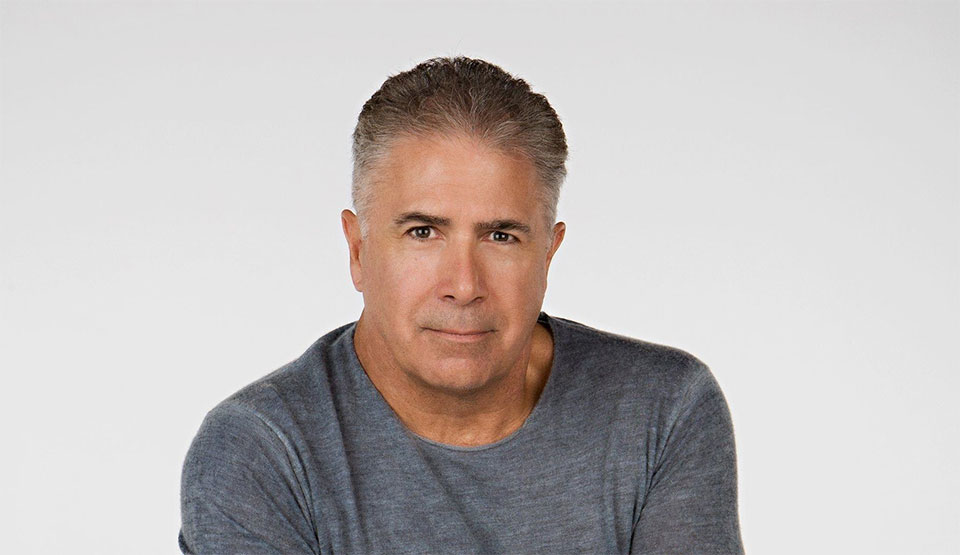Visionary Business Leadership

Creativity and imagination have never been more important for a successful business leader than they are in this day and age. I liken the creative process of a business leader to the efforts of the captain of an America’s Cup sailboat racing team. There is a crew of many people, but there is only one visionary on the boat who understands the coordination of these sailors, the ocean, the weather, the race, and the best way to circumnavigate the chaos to guide the ship. How does the captain best navigate the changing circumstances with creative tenacity?
The dynamic of the business word is a highly competitive, always-changing environment. As a business leader, you must have both a short-term and far-ranging vision of where you want to go.
I have worked with the top CEOs of the world—Bill Gates and Steve Jobs, to name a few—and what I have seen in their world is an unmistakable clarity and perspective. They have what I call the pinnacle of vision—the ability to see further than anyone else because of the extent of their passion and intellect.
You too are capable of this pinnacle of vision, achieved by faith in the creative problem-solving needed for a business leader to successfully navigate through the tumult of a problem to the horizon of the solution. I will detail two examples below that show this creative philosophy—among others—in exquisite action.
EXAMPLE ONE
I grew up next to Steve Jobs on Crist Drive in Los Altos, California. When I was a fledgling designer, I worked at Apple after he first left the company and John Scully had taken the helm. I was fortunate to be part of the team that was innovating the Mac Classic, StyleWriter Printer, and visionary futuristic Workspace 2000.
One day, preparing for a presentation in a conference room, I heard a crash and shouting in an adjacent conference room where Scully and some employees were. Apple had created a computer heavier than the Mac Classic that had the same format as an IBM typewriter. Someone had thrown the device onto the floor, destroying it and cursing it as a mistake. This was upsetting for everyone involved at the time.
This hyper-flawed product resulted from Scully listening to everyone and including their ideas. This was the recipe for failure—one that sent the ship straight into the eye of the storm. Due to a lack of vision, Scully left the company, and yet another CEO was hired; Apple stock sank so low that the company was on the verge of bankruptcy. However, Jobs came back with a vision of innovation, and this is how the company became a phoenix rising from the ashes.
I recount this event with the understanding that to me, it is so much more than a mere story. The crash of the product on the floor illuminated a lightbulb in my mind, and in that moment, I understood intuitively how important it is that a CEO have visionary leadership. You cannot be a stereotypically nice person; you need to be a visionary leader committed to navigating even the most turbulent waters, focusing your company on where it needs to go no matter what storms emerge. What is truly “nice” is to attentively listen but construct the successful vision that is what everyone in the company is hoping for. You must be fully committed and fully responsible always, at all costs.
As a business leader, you must use what I call future vision, which involves employing creativity and imagination to look into the horizon of mid-, short-, and long-term futures, creating the services and products that are ahead of the trend—in essence, directing the vessel of vision towards the trends and standards you yourself envision and create.
EXAMPLE TWO
Later on in my career, I had many opportunities to actually navigate stormy waters myself, affecting change on a larger scale. One such situation was my problem-solving work done for the United States Patent and Trademark Office (USPTO), which is, miraculously or not, the only profitable government agency. I was asked to be on the board of the Patton Public Committee to solve problems for Secretary of Commerce Carlos Gutierrez and Deputy Director of the USPTO Jon Dudas.
At first, I was honored, but I didn’t fully understand why I had been called in even though I had already accumulated over a hundred patents at that time. Coincidentally, I had just won the million-dollar prize on American Inventor, so I knew that Secretary Gutierrez and Director Dudas were familiar with my process of invention. In my first Public Patent Advisory Committee meeting, there were prodigious patent attorneys and government officials that were very clear regarding their roles in moving forward. When I was asked about my role, I responded that I wasn’t sure what it was, and the room erupted with laughter, a few people telling me that I would soon know.
While experiencing what seemed like an infinite number of meetings in which people were discussing problems ranging from structural chaos to individual inefficiency, I became frustrated. I therefore began to apply my proprietary problem-solving process in a way that had never been done for the USPTO. I submitted the result of my initial efforts to the USPTO—a 500-line process chart detailing how I felt the problems should be solved.
Shortly after, Jon Dudas called me and told me to implement the process immediately. I was shocked. This visionary captain said I would be given the whole team needed to implement the solution as well as all resources needed, no matter how costly. I was honored beyond belief and extremely proud to serve my country.
With Jon Dudas’ blessing, I was empowered to create focus groups across the U.S. in sectors ranging from education to Big Pharma and Congress. For the first time ever in the history of the USPTO, every contentious, conflicting subgroup agreed on a common problem statement—the basis for our communication and the beginning of the process needed to solve the USPTO’s major problems. The ship was directed rightly.
Using the process of invention, some of the most innovative solutions were arrived at that are still being implemented in the USPTO. The problem statement was the most important thing for me in this process. It took 6 months to make it perfect—to answer the question of every diverse group in America. I was capable of pulling off such a feat because I had a vision of process. What must be most waterproof is the creative problem-solving process used to arrive at a solution, this process inspired by an ever-brightening vision just on the horizon.
CONCLUSION
No matter how difficult the assimilation of diverse elements is in your leadership situation, a successful business leader must harness this diversity and chaos in order to lend it order, energy, and a new vision as he navigates his team towards success.
This process is the basis of innovation in America, whether regarding start-ups or an established business. The process is indeed always the same in that you must always be on the cutting edge of the surf. Believe you are capable of innovative exploration as a leader; your vision can carry you ever further and faster through the inevitable raging waves of creativity.
To learn more about developing a personalized problem-solving approach, you can order Conquering the Chaos of Creativity, a revolutionary new treatise on problem-solving by Doug Patton, here.
Written by Doug Patton. Have you read?
Best Countries For Business In Europe For Non-European Investors.
Most Startup Friendly Countries.
Best Countries For Quality of Life.
Most Trendiest Countries.
Bring the best of the CEOWORLD magazine's global journalism to audiences in the United States and around the world. - Add CEOWORLD magazine to your Google News feed.
Follow CEOWORLD magazine headlines on: Google News, LinkedIn, Twitter, and Facebook.
Copyright 2025 The CEOWORLD magazine. All rights reserved. This material (and any extract from it) must not be copied, redistributed or placed on any website, without CEOWORLD magazine' prior written consent. For media queries, please contact: info@ceoworld.biz








